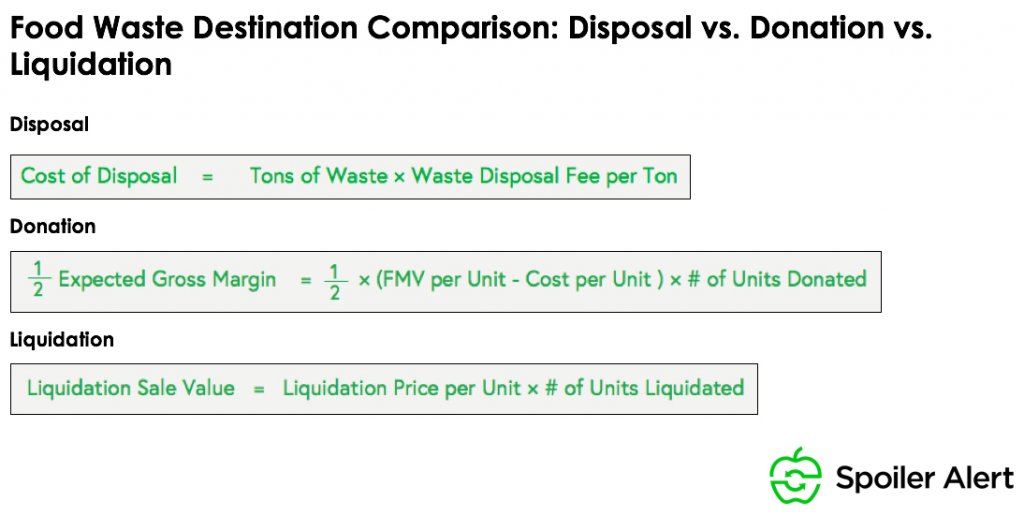Over the last few years, there has been rapid growth in awareness and acknowledgment of the global food waste problem. Numerous reports and research papers provide statistics on the quantity of food – estimated at a third of what is produced for human consumption – that goes to waste each year. As a result, major food businesses and corporate interest groups (including The Consumer Goods Forum) have made commitments targeting food waste.
But moving from commitment to action can be difficult when there are alternative priorities competing for budget. Luckily, tackling wasted food can create company-wide business benefits, especially when a data-driven approach is employed. Data provides insights into why losses occur in operations, which areas provide the biggest opportunity for improvement, and how to continuously make progress towards stated goals. To capture effective data, measurement is key.
This piece provides an overview on why food waste measurement is important; tips to help measure and collect data; and how data can be leveraged to build the business case for food waste reduction initiatives. For further explanation, download Spoiler Alert’s new eBook, A Strategic Guide for Using Data to Drive Food Loss and Waste Reductions.
Why is Measurement Important?
We like to think of measurement as the window into what is happening within a food business’ operations. To understand food loss and waste (FLW), it is necessary to measure the amount of food that is lost in production or along the supply chain, as well as how much food is wasted before it reaches a consumer. Measurement provides the data on FLW that will help guide an effective reduction strategy.
Beyond obtaining relevant data to facilitate action, companies have both internal and external motivations for quantifying food loss and waste. Food waste measurement can help companies fulfill corporate sustainability commitments, improve employee engagement/retention, and reveal operational inefficiencies. Studies have found that employee retention, productivity, and engagement all increase when companies have strong corporate sustainability practices. Promoting that a company is below the industry average for food waste generation is a great way to attract top talent.
There is also mounting external pressure on companies to quantify and report food waste. Shareholders and customers alike now have unlimited access to information, and this has created a demand for transparency unlike ever before. A recent example of this comes from Trillium Asset Management, a progressive investment firm with over $2 billion in assets under management. On behalf of shareholders, Trillium has directly engaged companies like Whole Foods and Target to report FLW generation and actions being taken to mitigate the problem.
Tips for Measurement.
Food waste reduction is a continuous improvement process that starts with understanding what is currently happening and establishing a baseline. This means figuring out how much food is going to waste and how it is being managed (e.g., 60% of unsold food product goes to landfill; 30% goes to animal feed; 10% to donation partners), commonly referred to as a FLW inventory. The Consumer Goods Forum’s voluntary Food Waste Resolution proposes halving food waste within retail and manufacturing operations by 2025.
Here’s the thing – not every company has the same definition for what constitutes ‘food loss and waste’, making it difficult to compare and contrast companies’ waste generation, benchmark for improvement, or work collaboratively with supply chain partners to mitigate the problem. A company might consider anything that isn’t recovered for human consumption to be waste, whereas another company might consider waste as only the product that goes to a landfill. To overcome this challenge and establish consistency and transparency around FLW measurement and reporting, the Food Loss and Waste Accounting and Reporting Standard (FLW Standard) was created. The global standard is being adopted by major companies including Consumer Goods Forum members like Tesco, Nestlé, and Delhaize America.
Companies have options when it comes to measurement solutions and tools for capturing data, which vary in accuracy, completeness, continuity, and level of investment required. Any company committed to reducing food waste should also understand that a consistent and credible data collection strategy is needed, so improvement areas can be identified and progress can be monitored. It is possible that a company is already capturing unsold inventory and waste data through a warehouse management system (WMS) or enterprise resource planning (ERP) platform. There are also more tailored solutions, such as Spoiler Alert, that can help with this process. The most important thing is finding a solution that provides the actionable data and insights to guide a company’s reduction initiative.
Using Data to Build the Business Case for Improvement.
In Spoiler Alert’s new eBook, we walk through the steps for how to leverage operational and financial data to recover value from unsold inventory and identify a business case for investing in waste reduction initiatives.
Key to this process is understanding that there are three potential financial benefits associated with managing unsold inventory to reduce food waste:
- Enhanced tax deductions from donating food to qualified nonprofits.
- Lower waste disposal fees from volume reductions, regardless of end-destination (e.g., landfill or compost).
- Incremental revenue earned through discounted sales or liquidation markets.

But Why…
Our goal is to show that effective food waste management can and does impact a company’s bottom line and profit margins. Using data to communicate impacts in financial terms helps all departments understand the true impacts of food loss and waste. And when these impacts are understood, food waste commitments are more attractive and get the attention they deserve.
Ricky Ashenfelter
Co-Founder & Chief Executive Officer
Spoiler Alert
For more information, download our free eBook here.

